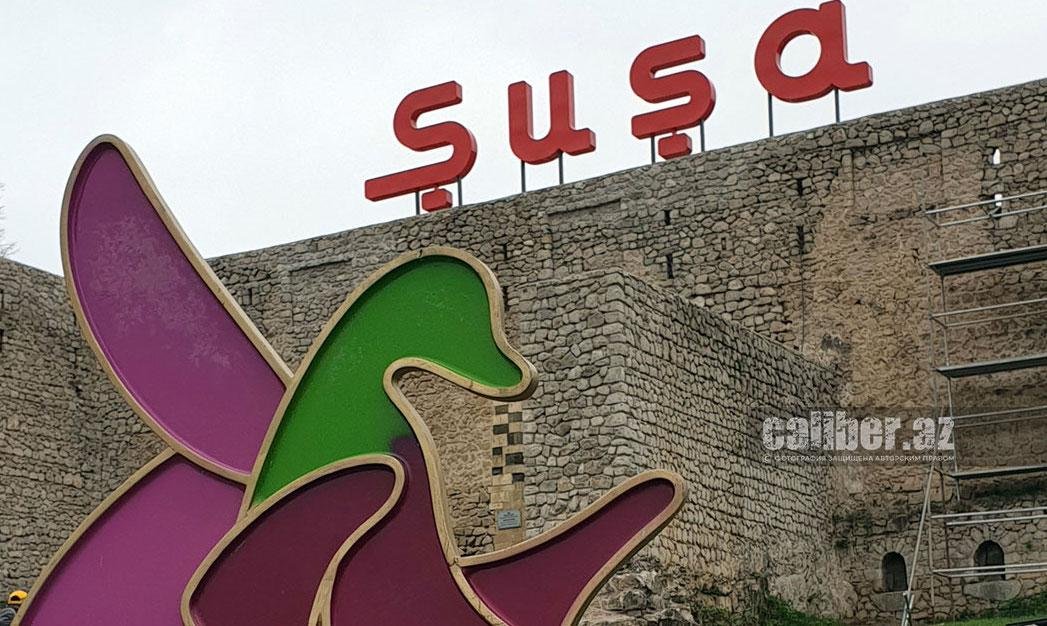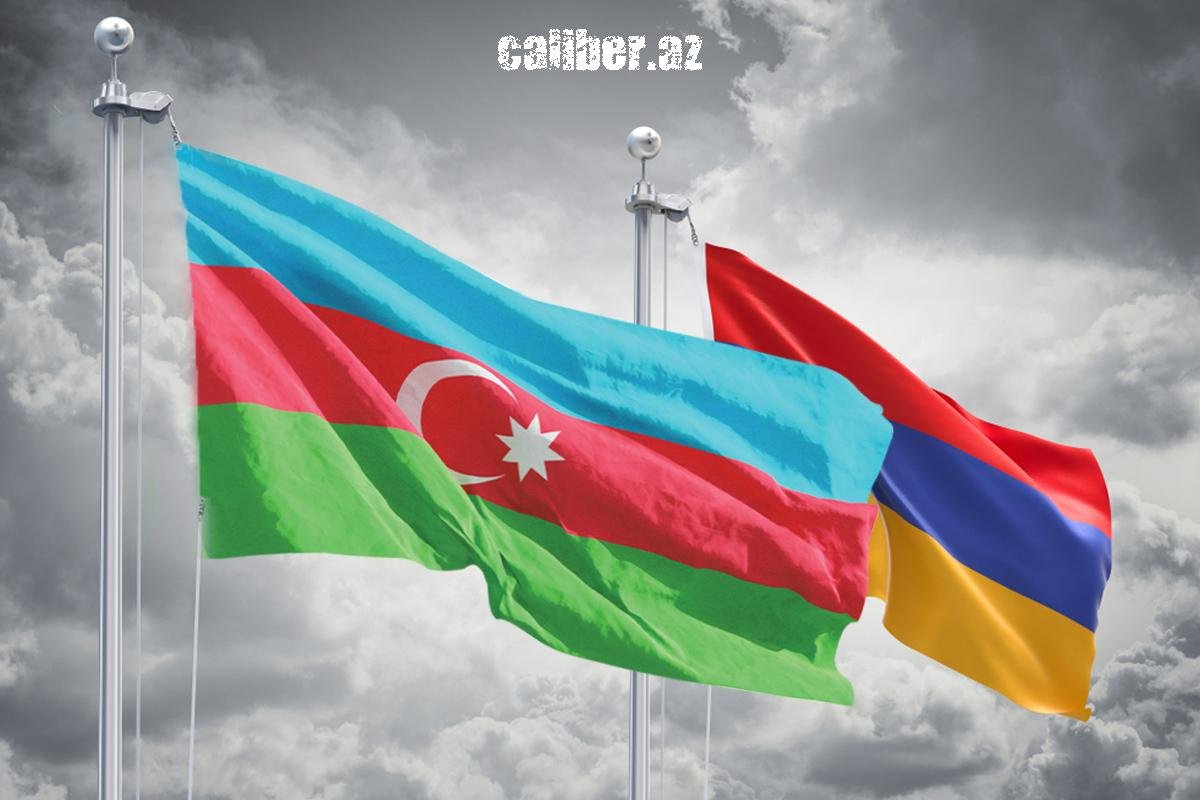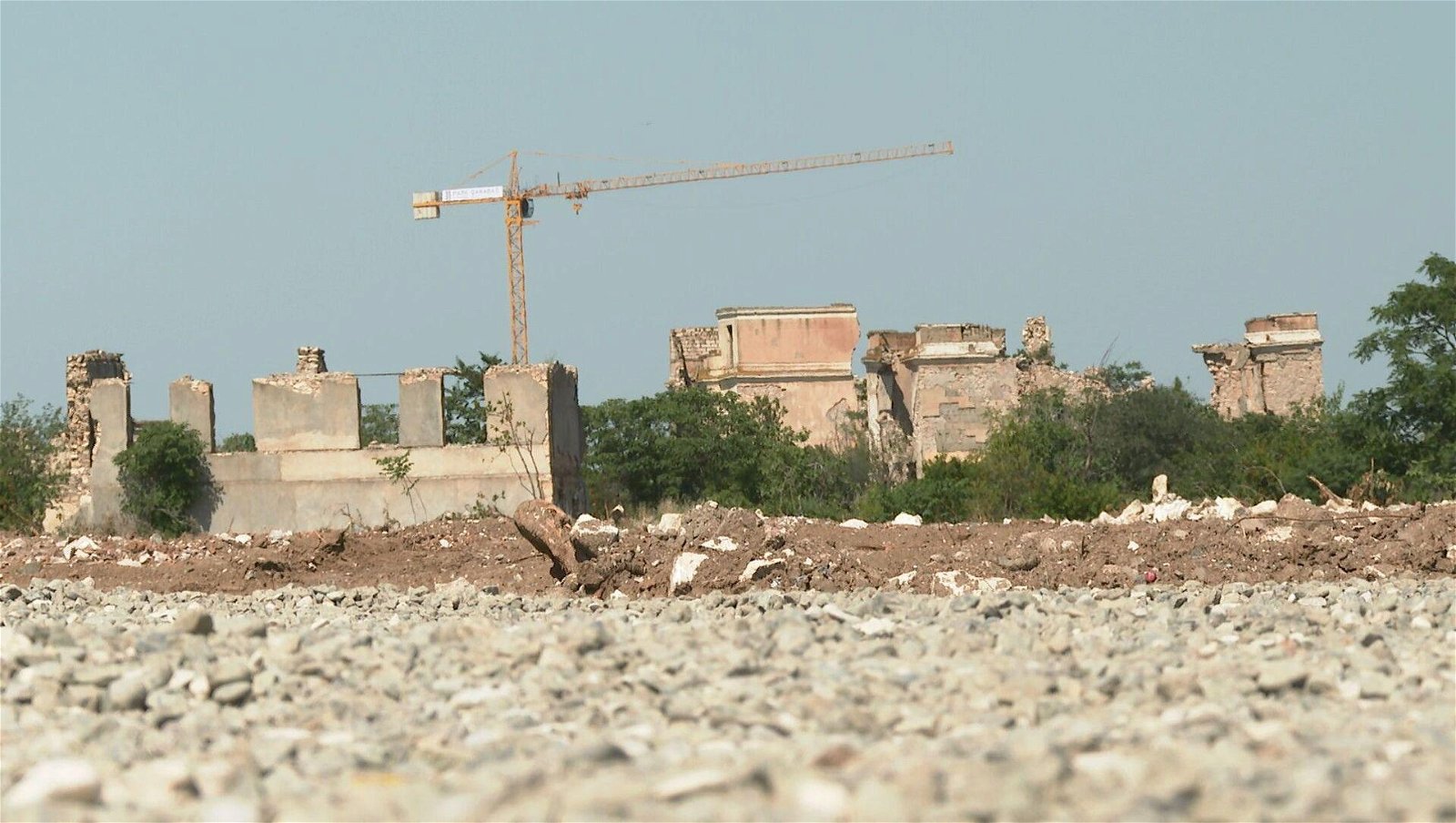Path to future via Karabakh: Difficult balance of reconstruction, peace process Analysis by Serhey Bohdan
On November 8, 2020, the Azerbaijani Armed Forces completed the defeat of the Armenian troops in Shusha, having won the final victory in the war for the restoration of the country's territorial integrity. In Azerbaijan's history, this date has become the starting point of a new era, during which the Azerbaijani state will have to solve many difficult tasks to build peace after success in the war. For Azerbaijan and the entire South Caucasus.
Fundamental military superiority
The liberation of Shusha was symbolic even in detail. Due to the peculiarities of the terrain and the supposed (turned out to be a myth) Armenian military preparations, the city was considered impregnable. Western and Russian media, even after several weeks of fighting, insisted that the war in Karabakh would drag on, and the Azerbaijanis of Shusha were "too tough". They predicted: "This escalation, like the previous ones, will end at most with Azerbaijan seizing several strategically important heights and several square kilometres of territory." However, by the beginning of November, the Azerbaijani military captured Karabakh's key districts, entered Shusha at first without heavy equipment and liberated the city soon after heavy fighting.

Fighting for its territorial integrity, Azerbaijan won a military victory, and not a fleeting one, but in several military campaigns of 2016-22, repeatedly demonstrating its superiority on the battlefield. For comparison, during the First Karabakh War, Armenian troops captured the main territories during those one and a half or two years, while Azerbaijan was dealing with internal political instability and its consequences, and no one in the Caucasus (or throughout the former USSR) had even imagined that such aggression and seizure of foreign lands were even possible. That is, the military superiority of the Armenians at that time was conditional and based partly on disregard for morality and humanity.
But let's abstract from the ethical differences, compare the technical side of the issue. As already mentioned, the struggle of the Azerbaijanis for the liberation of their lands has been many years. The alignment of forces in favour of Azerbaijan became obvious by the mid-2010s. Yes, the Western media, even after the defeat of the separatists in the war, continued to write about the "surprise" of the Azerbaijani victory, because "it was difficult to assess the potential of each side - there is no accurate data on military purchases". However, there was nothing surprising there, and anyone who was interested in the subject and did not suffer from racism and Azerbaijanophobia could see in the 2010s that Azerbaijan had systematically and patiently built a new army and military-industrial complex based on a new economy, and thus the restoration of the country's territorial integrity was only a matter of time. The well-known statistics on the renewal of armaments of the Azerbaijani and Armenian armies, the scale of modernisation of defence systems were simply incomparable.
In practice, everything reflected the outcomes of multiple military clashes. When its army was forced to concede time after time in periodic skirmishes on the contact line beginning in 2016, Armenia's leadership had to recognise the hopelessness of its situation. But it wasn't there, and even after the defeat in 2020, Armenian leaders were in no hurry to seek solutions through negotiations.
Therefore, two years ago, the Azerbaijani army, slowly and avoiding losses and destruction as much as possible, took control of key areas captured by the Armenian army during a series of campaigns. As military expert Viktor Murakhovskiy said, "we did not see a steamroller of an offensive with artillery, firing shafts, tanks, etc. here," instead, the Azerbaijanis acted cautiously, betting on reconnaissance, long-range fire damage and the use of UAVs. It was a conscious choice, not a method dictated by the available opportunities - the Azerbaijani army had plenty of means to ride on the enemy with a "steamroller", and regardless of the victims to use firepower. It would be easier for the military to bomb everything that moves. Instead, Baku deliberately used military force, chose and consistently occupied key areas, showing opponents that they had nothing to catch on the battlefield, and at the first opportunity switched to diplomacy.
The Armenian leadership clearly hoped to minimise the loss in the war and "re-freeze" the conflict, but subsequent events have repeatedly shown that these attempts lead nowhere. Firstly, Baku was on the alert against attempts to "re-freeze" and in case of the opponents' intractability, it created a new material reality on the ground again and again, freeing certain points and heights, and bringing the situation out of stagnation. This escalation in Karabakh was not a war, but a compulsion to peace.
Secondly, Yerevan faced an foreseen reality - its maneuvering between Russia and the West did not provide the expected level of external support for "re-freezing". But it has demonstrated again and again what a strategic impasse the Armenian state has been led into by the illusions of Armenian ethnic nationalism aimed at expansion. And it is not surprising, because the Republic of Armenia does not have a unique position - it can be bypassed and bypassed, and it does not have the economic weight to rebuild the region "for itself". In political terms, the influence is also minimal, yes, these are approaches to Iran, but the West has plenty of such bridgeheads on the borders of Iran, like Iraq, the Emirates, etc.
In addition, cooperation with Azerbaijan, Türkiye and Georgia is much more important for Russia, the West and China, through which energy resources from Central Asia can go to world markets and which are able to rebuild the South Caucasus by connecting it with neighbouring countries and regions.
More than strange questions
However, despite this course of the Armenian government, the negotiation process is progressing. On October 3, the Azerbaijani and Armenian foreign ministers began preparing the text of a peace treaty during a meeting in Geneva. Speaking in parliament on October 26, [Armenian Prime Minister Nikol] Pashinyan stated his desire to sign it by the end of the year.
Peace talks are going on in parallel in several directions: in a trilateral format with Moscow's participation and in a trilateral format with the EU participation. Türkiye and the United States are also involved in the settlement process. In November, [Azerbaijani President Ilham] Aliyev and Pashinyan may meet again with the EU mediation in Brussels.
However, according to the results of the trilateral meeting of the Azerbaijani, Armenian and Russian leaders in Sochi on October 31, commentators noted that it has not yet been possible to reach agreements on a peace treaty and on the principles of border delimitation.

But such red tape does not help Armenia in any way: at the Sochi meeting, it achieved nothing - the final statement does not mention Karabakh, and Pashinyan's proposal to consolidate the Russian settlement project in it was not supported.
The absence of peace does not benefit anyone – instead of creating, countries have to deal with military issues in many ways. But if Azerbaijan and other countries are more likely to distract from fruitful work, then it seriously harms Armenia. In the current situation, this already poor country is forced to bear the burden of military spending. The Pashinyan government's maneuvering between Russia, the EU, the USA and Iran looks like throwing in all directions, due rather to some kind of ideologised antipathy to neighbours, and not as a pragmatic search for a solution, and undermines Armenia's international positions. As a result, the delay in the peace treaty leads to the fact that the Armenian leadership has to talk to Baku from an increasingly weak position - retreating and still giving up after military clashes the same occupied lands that it could return without shedding blood (and mostly Armenian) and without destroying people's lives, within the framework of mutually beneficial arrangements.
It is amazing, but such a course is maintained even despite the absence of any alternative for the Armenian leadership other than to give up what was captured and normalise relations with its neighbours, since in material terms it cannot rearm its forces. As military analyst Mikhail Khodarenok noted, Yerevan did not have a single chance to build even an air defence system. The reason is simple - there is no money, because it would take 10 annual budgets of Armenia to create a full-fledged air defence system. The whole of Armenia, not military budgets. An illustration of the fake nature of the Armenian army's modernisation was the purchase by Yerevan in Jordan of used Soviet air defence systems Osa.
As a result, in diplomacy, Yerevan can only bet either on a bluff or on the involvement of external forces and foreign states in the region. Moreover, Pashinyan simultaneously does this in relation even to the players fighting with each other - the Russian Federation and the West, the West and Iran. And the attitude of these countries and blocs to the Armenian leadership is appropriate, since everyone understands Pashinyan's double game. An example is the outcome of an extraordinary session of the CSTO [Collective Security Treaty Organisation] Council recently convened on the initiative of Yerevan, at which he requested support in exerting pressure on Azerbaijan, and again did not receive it. Belarus President [Alexander] Lukashenko subsequently published his speech at the session, in which he persistently urges Pashinyan to settle the conflict with Azerbaijan peacefully, and calls the questions posed by the Armenian leader on Karabakh "more than strange", because "it is impossible to put the question like this: on the one hand - the CSTO, and on the other hand - Azerbaijan! This is wrong!". Instead, Lukashenko urged Pashinyan to talk with Aliyev, and hinted at the combinations being built by the Yerevan leadership with the participation of the EU, the USA, Iran and other players: "Why are you fighting?! Sit down together and agree! And may Russia consecrate this treaty! But you don't want to! Some kind of, you know, there is a game going on here!"
Against the background of the weak positions of the current Armenian government in international politics, its desire to invite anyone to Armenia and the Caucasus is a guaranteed recipe for turning Armenia, and then the surrounding region into a "gateway yard" and creating an unstable and antagonistic atmosphere. It is not surprising that Azerbaijan (and not only Russia and Iran have similar positions) have spoken out against this policy of "open doors" in the South Caucasus, which the Armenian leadership is trying to use.
"A year ago, none of this was here..."
At the same time, Azerbaijan is moving forward without a peace treaty. This was also witnessed by the dynamics of Karabakh’s restoration. As Azerbaijani Prime Minister Ali Asadov recently stated at a meeting of the CIS Council of Heads of Government in Astana, almost $3 billion was allocated for the restoration of Karabakh and East Zangazur (i.e. liberated areas) in 2021-2022, and large-scale work has begun on the return of internally displaced persons to their homes. In September, Azerbaijan's Finance Ministry reported that 3 billion manats (about $1.75 billion) were allocated in the 2023 state budget for the restoration and reconstruction of the liberated territories, i.e. slightly less than 10 per cent of the budget’s expenditure part. In addition, in early 2021, the Karabakh Revival Fund was established, collecting donations for the this area’s restoration.
The return of refugees to Karabakh after 27 years of exile is a very difficult task and there are very few precedents for such a large-scale repatriation in world history. In the 1990s, about one million Azerbaijanis became refugees and internally displaced persons. It is impossible to simply bring people to the destroyed areas, because this would put them in difficult conditions on lands where there was almost no population for three decades with all the consequences that follow from this.
However, this problem may also become a unique chance for Azerbaijan to test new approaches to the development of a separate region of the country first, which can then be transferred to the whole country. Already at the beginning of the restoration of Karabakh and the surrounding areas, President Aliyev stressed that modern urban planning technologies will be introduced in the built-up settlements, and the entire region should become a zone of "green energy", major transport and infrastructure projects will take an important place. This could potentially make Karabakh and Zangazur one of the most advanced parts of Azerbaijan. Becoming an experimental development platform, it will help to start a new stage of modernisation of the whole country.

At the same time, Baku emphasises that Karabakh should be open to the world, and the liberation of Karabakh means a chance for the "disclosure" of the entire South Caucasus region. A year after the war, Western journalists admitted: "The road to Shusha now is a perfectly flat strip of new black asphalt with a length of 55 km... A year ago, none of this was here - only forest, mountains and rare ruins of houses that were deserted during the First Karabakh War." Not only highways have been built since then, Fuzuli Airport was built and opened a year ago in eight months, and on October 20, a new international airport in Zangilan was opened.
Yes, Yerevan is still delaying the issue of unblocking the infrastructure of the South Caucasus region, primarily the Zangazur corridor, but it is only a matter of time, since this project was stipulated in the statement of the Russian, Armenian and Azerbaijani leaders on November 10, 2020.
Interaction with the Armenian ethnic population of Azerbaijan's Karabakh region is also an important point, as officials in Baku constantly talk about. Speaking recently at a meeting of the UN General Assembly, Foreign Minister Jeyhun Bayramov stressed that against the background of the return of refugees, "Azerbaijan is determined to reintegrate citizens of Armenian origin living in conflict areas... ensuring equal rights and freedoms for all citizens of Azerbaijan, regardless of their ethnic, religious or any other affiliation".
Armenian nationalism and ruins of Karabakh
The process of rebuilding Karabakh highlights the tragedy of the region during the Armenian occupation. Proclaiming loud nationalist slogans and talking about the mythical "native Armenian" lands, the extremists in fact treated the captured very demonstratively. Even the Western media, which did not notice any sympathy for Azerbaijan, admit that in the occupied territories, not only hundreds of villages, but entire cities, including Aghdam, Fuzuli, Jabrayil and Zangilan, turned into ruins, "ghost towns". The fields were planted with mines, huge spaces were empty and inaccessible to people, the separatists had no signs of serious plans for the development of the region. This is how Western journalists described the situation in Fuzuli last year: "The new road to Shusha begins here, in the city of Fuzuli, in the middle of minefields. In the places where the sappers are currently working, blue pegs denoting the found mine stand a metre apart. Once 17,000 people lived in Fuzuli, now it is a field of ruins. The remains of the walls of the houses rise barely a metre above the ground."
When Armenian nationalists talk about the "primordially Armenian" lands of Karabakh, it's important to remember that one does not treat their property that way. The overall result of the separatists' power is obvious. And it cannot be attributed to some objective difficulties, for example, the blockade. Armenia was not completely isolated from the world, and in recent decades it has been connected to it both through Georgia and Iran, and there have been no serious international sanctions against Armenia. Nevertheless, the occupied territories have been decadent and desolate for 27 years. In complete contrast, the results of overcoming the consequences of the occupation achieved by Azerbaijan in the two years since the liberation show that a different future is possible for Karabakh and the South Caucasus (including Armenia).








